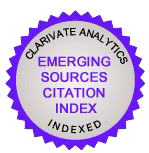Уход от коммуникации в неприятном разговоре в русской коммуникативной культуре (на материале интернет-форумов)
Palabras clave:
Communication, strategy, tactics, avoiding of communication, talking, taboo, euphemismResumen
The way to avoid communication is one of the frequent subjects of scientific research. This strategy allows communicants to stop unwanted communication and an unpleasant conversation. During some decades the study of an unpleasant conversation was limited to determine only forbidden subjects (taboos) which helped to avoid conflicts and misunderstandings. However, the modern communication is characterized by a new type of communicants, who do not maintain the interlocutor’s image, but preserve good self image and own communicative space. The development of the individualist culture of present-day society brings to the fact that a person does not want and does not consider necessary his remaining in an uncomfortable state of communication.This article deals with not just only topics of conversation which are potentially unpleasant for Russian-speaking communicants, but also with basic tactics which allow avoiding communication and are widely used in the contemporary Russian communicative culture.
The material of the study consists of Internet forums texts where users discuss unpleasant topics of conversation and express different manners to avoid them in communication. The selection of this material is not random. First of all, the access to Internet communication allows to analyze a large number of texts and to obtain reliable results. On the other hand, Internet communication reflects the communicative culture of present-day native speakers. An important factor to choose the material for this research was also the peculiarity of Internet communication. Thus the anonymity allows users to answer sincerely for a moderator’s questions and to give examples from their personal lives.
Descargas
Descargas
Publicado
Cómo citar
Número
Sección
Licencia
Los autores conservan los derechos de autor sobre sus trabajos y garantizan a la revista el derecho de ser la primera publicación del mismo. Los artículos se publican bajo la licencia Creative Commons Atribución-NoComercial 4.0 Internacional (CC BY-NC-SA 4.0), lo que permite a los lectores y otros investigadores copiar, redistribuir, remezclar, transformar y construir a partir del material, siempre que se respeten las condiciones establecidas.












